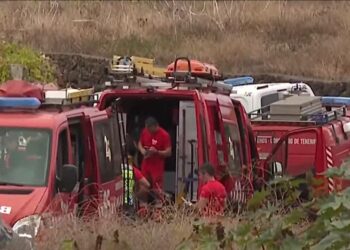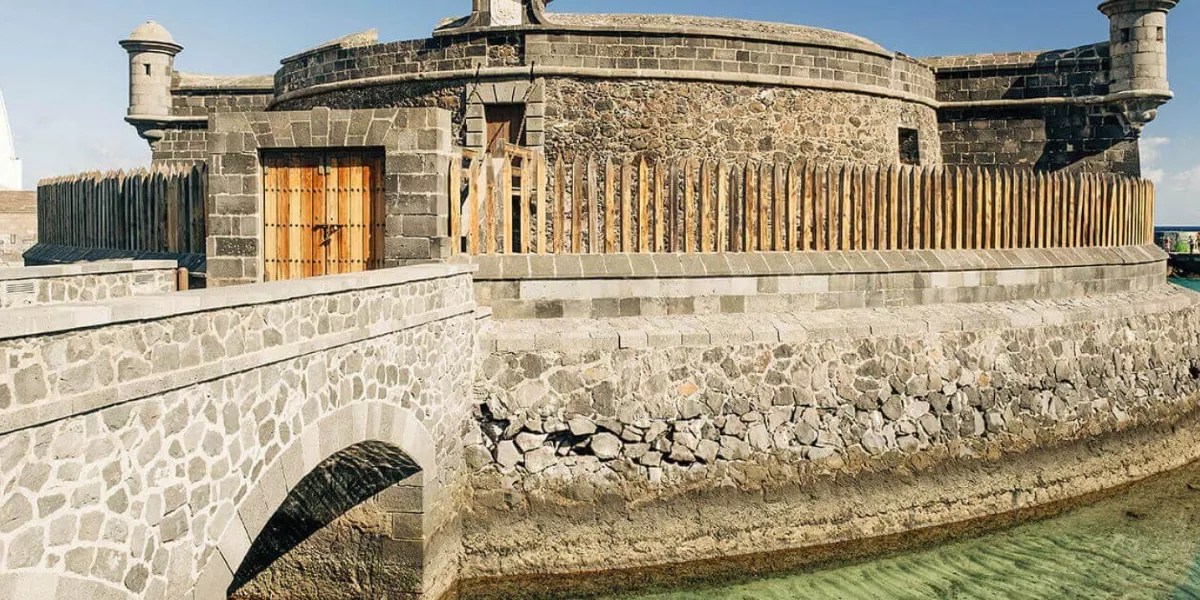The mouths of the second Erjos tunnel, the longest in the Canary Islands and one of the largest in Spain, which runs under the Teno massif and parallel to the tube opened on June 26, have already been found after three years and eight months of drilling. Unlike what happened nine weeks ago, this time there was no event with authorities or those responsible for the execution of the project, but rather a statement from the Department of Public Works, Housing and Mobility to report the demolition of the last rock wall that separated the north and south of the Island.
The drilling, which has been carried out mainly by blasting, and in which robotic excavation machines have been used depending on the ground conditions, has been carried out in two phases with the aim of reducing the ground pressure during the stabilization of the the vault: a first advance in the upper part and a second, called destroys, in the rest, which is the one that is currently being executed in the lower part, reported the Ministry. The double Erjos tunnel, with a length of 4,855 meters, to which two false tubes will be added (one at the southern mouth of 140 meters and another of 100 in the northern area) overcomes the main orographic obstacle of the Island Ring and will connect the municipalities of Santiago del Teide and El Tanque through a double underground highway of 5.1 kilometers, which will make this tunnel the longest in the Archipelago and the largest road infrastructure under construction and most expensive in Spain, “due to the volume of investment and the social, economic and mobility needs it covers,” indicates the Government of the Canary Islands.
It is expected that 17,000 vehicles will use the dual carriageway daily by early 2025, although technical studies indicate that this number will double in a decade. The double underpass will be key to relieving the traffic load that the Northern Highway (TF-5) supports and facilitating economic dynamism between the North and the South, in addition to improving safety and speed conditions for motorists.
Specifically, it is estimated that drivers will gain an average of 20 minutes when traveling between El Tanque and Santiago del Teide (in both directions) compared to the current road layout through the TF-82, a mountain road with numerous curves.
To carry out this work, included in the Highway Agreement with the State, a significant deployment of specialized operators (up to 300 direct workers) and state-of-the-art drilling machinery has been designated. Furthermore, in order to speed up the work, three daily eight-hour shifts have been established, seven days a week.
256 MILLION EUROS
The project’s investment budget amounts to 256 million euros – the works were awarded four years ago for 241 million, although the price updates applied to the works caused an increase of 15 million -, of which 18 are allocated to environmental actions. in the surroundings of the work, specifically the recovery of habitats of community interest, as well as the restoration of the La Grama quarries and the Bilma mountain, in addition to the construction of a park on the urban edge of Santiago del Teide.
The works were awarded in September 2019 to the Temporary Business Union (UTE) formed by Fomento Construcciones y Contratas (FCC), Syocsa-Inarsa and El Silbo. To date, more than 50% of the work has been carried out, which will be completed in the first half of 2025, according to the forecast of the Ministry of Public Works, Housing and Mobility.
















